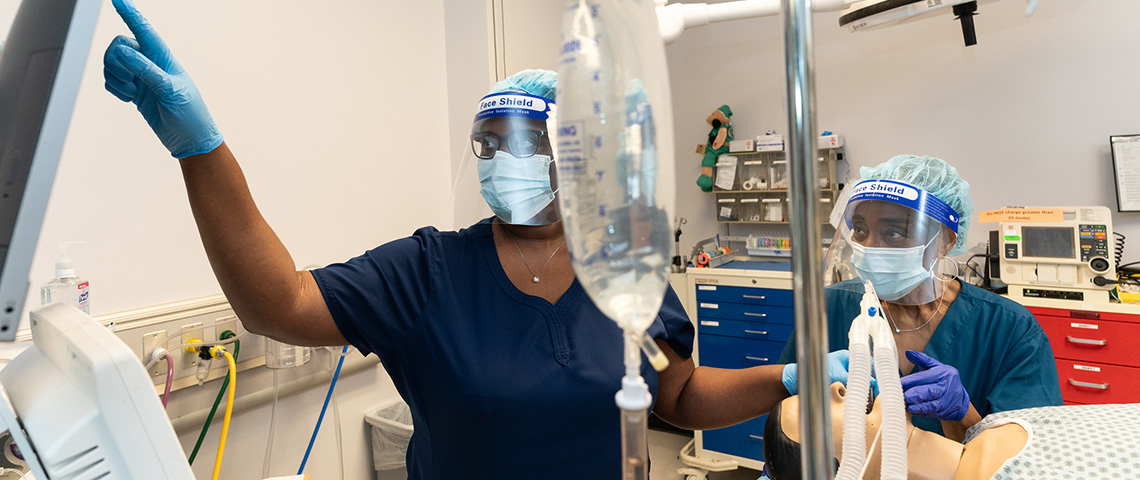
Since 2004, we have been educating our student registered nurse anesthetists in our dedicated Nurse Anesthesia Simulation Labs, which provide a unique, state-of-the-art teaching and learning experience. Integrated throughout the curriculum, our simulation program supports the achievement of learning objectives from the first year of our DNP Nurse Anesthesia specialty onward. The simulation program enables the practice of high-risk interventions without the risk of patient injury, ultimately enhancing patient safety.
Our advanced anesthesia labs feature full-body pediatric and adult human patient simulators, which replicate the anatomy, physiology, and treatment responses of real patients. These simulators are utilized in various settings, including operating rooms, intensive care units, and emergency/trauma environments, mirroring the clinical experiences students encounter. Our students have an invaluable opportunity to gain hands-on experience with anesthesia machines, ultrasounds, and airway equipment, bridging the gap between theoretical knowledge and practical skills.
All simulations mimic real-life scenarios, immersing students in a safe environment where they interact with an interdisciplinary team. The goal is to demonstrate leadership, delegation, teamwork, and closed-loop communication. Faculty, Certified Registered Nurse Anesthetists from the community, and nurses assume various roles to re-create the hospital environment, with the goal of improving patient care.
INACSL Healthcare Simulation Standards of Best Practice
All simulations are designed in accordance with the International Nursing Association for Clinical Simulation and Learning (INACSL) Healthcare Simulation Standards of Best Practice. Our structured simulation design ensures consistency as each student progresses through pre-briefing, the simulation itself, and video-assisted debriefing. High-fidelity simulations may include malignant hyperthermia, acute hemorrhage, difficult airway management, intubation for the COVID-19 patient, unstable cardiac rhythms, and much more. Students are also exposed to high-fidelity simulations across the lifespan, including pediatric and obstetric emergencies.
Virtual Reality
Virtual reality (VR) is now integrated into the curriculum, offering realistic simulations that range from anesthesia machine checkouts to the management of rare intraoperative emergencies. This technology allows students to practice a variety of simulations at their own pace and in the comfort of their homes, thereby building the confidence, critical thinking, and skills necessary for success prior to participating in clinical experiences. Check out the video below to learn more about the use of VR.